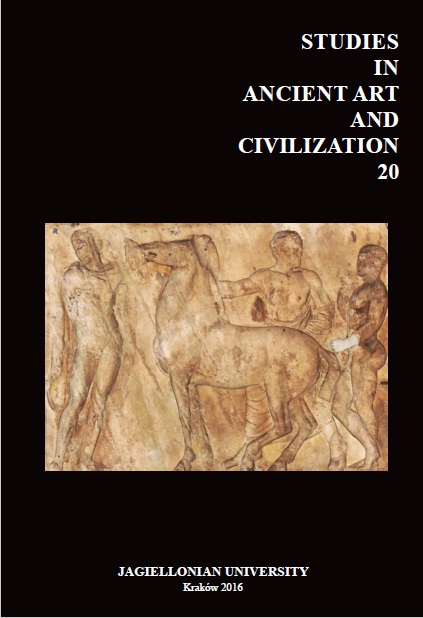Investigation on the implementation of optical refinements in the Parthenon frieze reliefs
Investigation on the implementation of optical refinements in the Parthenon frieze reliefs
Author(s): Konstantinos-Dionysios Bouzakis, Dimitrios Pantermalis, Areti Sakellaridou, Athina-Antonia Bouzaki, Marianthi Grigoriadou, Ιoannis MirisidisSubject(s): History, Archaeology, Cultural history, Ancient World
Published by: KSIĘGARNIA AKADEMICKA Sp. z o.o.
Keywords: Parthenon west frieze; perspective distortion; anthropometric proportions; optical refinements
Summary/Abstract: The aim of this paper is to examine the possibilities of interpretation using readings of pictorial schemes on Archaic Greek vases on the example of a black-figure lekythos from the collection of the Institute of Archaeology of the Jagiellonian University in Krakow. The current interpretation of the scene on the vase describes it as setting out for the hunt. It is argued here that this scene represents warriors setting out for war, in line with the first interpretation of this piece made by Piotr Bieńkowski. Furthermore, it is argued that since the readings could always be plural, the creator of the vase made deliberate attempts to limit interpretation, however, the vase can still retain its interpretational freedom if put in a viewing context that stimulates unorthodox readings.Issues related to visual representations as perspective distortions, optical illusions and refinements were known in antiquity, since a number of architectural monuments are illustrative of such practices. The Parthenon of Acropolis in Athens is a relevant example where this knowledge was probably applied. The present paper aims at providing analytically documented evidence of whether optical refinements were considered in adjusting the background level inclination of the Parthenon west frieze reliefs and in the design of the carved human figures. For this reason, the implementation of optical refinements for avoiding perspective distortions is elucidated and the calculations for their prediction described. Employing this mathematical analysis, optical refinements related to the west frieze reliefs and their background inclination were determined. These diminish optical illusions when a region of the frieze blocks’ is observed from a viewpoint on the stylobates’ level between two columns. Also presented are characteristic anthropometric proportions per interna- -tional standards, and their modifications when optical refinements are applied. These modified proportions of a human body are compared to those of human figures carved on the Parthenon west frieze blocks. The latter were determined via evaluation of their digital data obtained by means of 3D laser scanning. What was revealed, was an impressive conformity between the reliefs’ background inclination along with the depicted human body proportions of the Parthenon frieze, and the corresponding ones calculated for avoiding optical illusions due to perspective distortions. These findings give substantial weight to the hypothesis that optical refinements were implemented in the Parthenon west frieze. However, they cannot exclude the fact that the human body proportions followed aesthetic rules and norms of the Parthenon construction period.
Journal: Studies in Ancient Art and Civilization
- Issue Year: 2016
- Issue No: 20
- Page Range: 47-68
- Page Count: 22
- Language: English

